PR Expert Maha Abouelenein: Startup founders should leverage the power of storytelling
Maha Abouelenein is a PR expert and an accomplished senior-level communications executive and entrepreneur with more than 27 years of experience.
As the Head of Communications MENA at Google for three years, Maha developed the corporate communications, brand and reputation strategy for the Internet leader.

Maha Abouelenein
She is now the Managing Director of OC “Organizational Consultants”, where she advises and manages global companies and startups on marketing communications by adding value to deliver measurable results. In this role, Maha worked on Gary Vaynerchuk’s global outreach and strategy (Gary will be speaking at BRAND MINDS 2020) and launched big brands like Netflix, Udacity and Deezer in the Middle East.
Check out Maha’s YouTube channel, Digital and Savvy where she shares her knowledge about industry trends, how to set up PR for your business and how to make the most of communications in a rapidly evolving landscape.
I am always looking to connect with experts to ask them relevant questions to our audience. So when the opportunity of talking to Maha presented itself, I grabbed it with both hands.
Below you can find Maha’s expert insights on PR and social media, why startup founders should leverage the power of storytelling, three trends in PR that she believes will go big in 2020 and tips and tricks for startup founders looking to earn media attention.
1. In our day and age, customers are shifting their attention from traditional mediums like TV and print to digital and social media. How has this change affected PR?
There is no question the way we consume information has changed dramatically thanks to the internet and mobile technology.
Everyone wants to have information in real-time so companies and brands have to communicate in real-time. The impact on PR means that speed matters, but also what we say and how we say it needs to be more relevant.
There is a lot of noise out there – so the businesses and brands that lean into good storytelling and making meaningful authentic connections will win.
I am so energized where I see things going because it means that the news industry is taking centre stage. With the influx of influencers and content creators – it has levelled the playing field which is giving an enormous opportunity for the PR industry to really stand up and stand out!
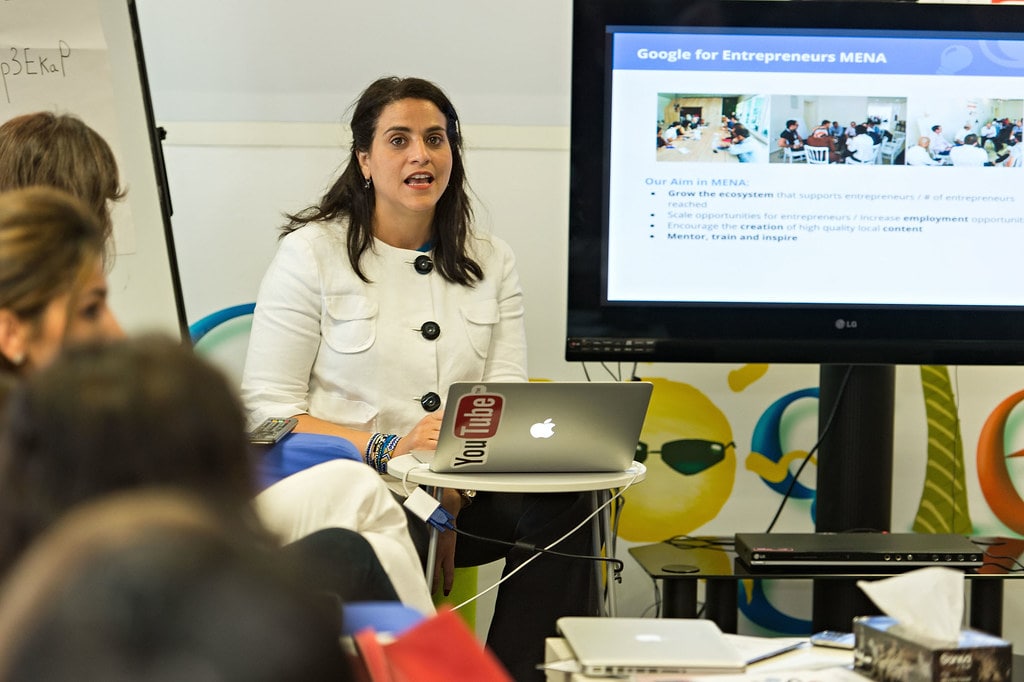
[bctt tweet=”PR expert Maha Abouelenein: Businesses and brands that lean into good storytelling and making meaningful authentic connections will win.” username=”brand_minds”]
2. How does storytelling support PR?
Storytelling supports brands communications efforts by sharing a more meaningful connection that evokes emotion. We connect with people we can relate to and stories allow us to make those connections.
People love a story – a beginning, a middle and an end. How are you delivering a powerful story to sell your brand? Don’t do it yourself, use the media to share your story with a wider audience. And better yet have a story or news that is shareable and ‘snackable’ that they can push on their social media channels.
Your aim is to create a story or content that is shareable. Something worth sharing with friends or family and something snackable – easy to digest and easy to understand. Think of what your news hook is – something unique, something new; also the timing is very important so that you are relevant.
The hook is the reason you are telling your story. Then comes the pitch – how are you going to sell it into them – how are you going to get them to listen to your story so they publish it and distribute it for you.
You need to convince them that is a story worth telling and that it will help them grab the attention of their readers. The stories that are pitched that get coverage are those that lean into a brand truth – taking a page from my Netflix playbook -the brand truth is to put the consumer in a situation that we all go through. That means finding something in common that consumers face and then how our story puts us in the centre of that situation.

3. Name 3 trends in PR that you believe will go big in 2020.
Voice.
Voice is only going to continue to grow! From voice search engine optimization to voice-assisted applications and skills to podcasts. Lean into voice. Find out what your brand sounds like by developing a sonic brand or starting a podcast. Get vocal. This is a HUGE game-changer for businesses and brands.
Read more on voice: How voice is changing customer behaviour and the way you do marketing
Personalization.
Everyone needs to think about personalization at scale. What can you do to personalize your relationships with your customers?
Companies are now communicating with customers across multiple channels – website, social, direct mail, in-store – the challenge is how to create a meaningful experience and relationship so that it feels personal, not virtual.
The way to keep consumers loyal and “sticky” is to think about how you can use data to understand your consumer and then personalize that experience for them. Think Nike – they allow you to personalize your sneakers and personalize your preferences to really engage with the consumer in a way that is personal to them.
Digital Reputation.
Everyone will need to pay attention to their digital reputation.
With the rise of deep fakes and the virality of content – this will matter more now than ever. Protecting your reputation is the single most important mandate for your future. Start investing now in how you will do that.
Digital reputation is not just about companies, it also impacts leaders especially those with personal brands.

4. What are your recommendations for entrepreneurs and startup founders to earn media attention in 2020?
I love this question!
First – you have to think about what is your message. The message is the most important element of earning media attention. Don’t think about what message is important to you – think about what is important to them.
Having the customer-first approach will really cause you to think about delivering a message that matters to them. Often we think about what we want to say, not what they want to hear. Craft a creation story that propels people.
Second – they need to really get to know the media that they are targeting. Start following the press, follow the social media accounts of the writers – learn about their beat and what stories they are writing about.
You can really learn a lot from listening and observing. When you know more about what they care about, it gives you more understanding when you come to pitch an idea to them about your business. Having that learning and context is crucial to know how to land a great story that gets media attention!
Third – try to speak at events. I like events because they are a triple whammy of power – first you get attention by speaking to a wide audience, second you will get social media coverage because everyone will be filming with their phones to prove they are there, and third the press always covers the events so this is a great opportunity to get all the media in one place to get some extra coverage.
Join the Conversation
We’d love to hear what you have to say.
Get in touch with us on our LinkedIn Group, Facebook Group or Twitter.
What are hearables? Definition, benefits and the future
In this article:
- Definition of hearables
- The ear – an unexpected window into our body
- What can be accessed through the ear
- The data which a hearable can record and monitor
- 12 ways hearables can improve your life
- Hearables – from physical wellbeing to mental wellbeing
- Challenges
When we think of hearing technology we immediately refer to our old grandfather whose hearing has been diminishing over time and now he is wearing a hearing aid.
Or we think of the latest movie where Secret Service agents save the president in the last minute while receiving instructions into their hearing piece.
How about you? There’s nothing wrong with your hearing, yet you own and wear headphones or earbuds on a daily basis to listen to podcasts or music on your way home from work.

Hearables are more than headphones or hearing aids. They are smart wearables that you put in your ear instead of your wrist.
What are hearables?
A hearable is a wireless in-ear computational earpiece. Essentially you have a microcomputer that fits in your ear canal and utilizes wireless technology to supplement and enhance your listening experience. Many hearables will also feature additional features such as heart rate monitoring.

Skybuds
The ear – an unexpected window into our body
When we don’t feel well, we go to the doctor’s and ask for a series of blood tests to tell us what is wrong with us. Our eyes can also be indicative of our state of health. Sudden blurry vision may be a sign of an incipient stroke, the beginning of a migraine or a case of diabetic retinopathy.
Besides the blood and the eyes, there is another organ which can give us data related to the state of our health: the ear.
Poppy Crum, chief scientist at Dolby Laboratories and an adjunct professor at Stanford University writes in her latest article Hearables will monitor your brain and body to augment your life that thanks to their physiology, ears can speak volumes about us.
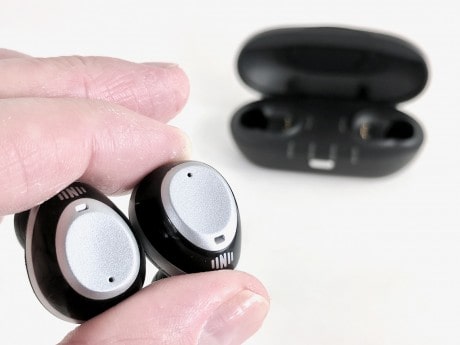
Nuheara IQ buds
What can be accessed through the ear:
- Brain electrical activity
- Blood oxygen
- Stress hormone levels
- Movement
- Eye movements
- Vagus nerve stimulation
- Temperature
- Skin resistance
- Heart rate
What data can be monitored by a hearable device:
- Stress
- Mental effort
- Where your eyes are directed
- Engagement
- Excitement
- Whom you’re paying attention to
- Physical health
- What calms you
The benefits of hearables
A man is freefalling from the top of a skyscraper. Superman flies in and saves him from certain death. Hearing over large distances is one of Superman’s powers. You may be surprised to learn that you don’t have to be born on another planet to get this particular superpower. Hearables can help you with that.
A hearable that listens to its owner for weeks, months, or years will have deep insight into that person’s mind.
Poppy Crum, Hearables Will Monitor Your Brain and Body to Augment Your Life
12 ways hearables can improve your life:
- Instantly measure heart rate, body temperature, blood pressure, pulse oximetry, ECG, electro-encephalogram signals;
- Physical activity tracking;
- Better sound filtering which improves sound quality;
- Hearing improved above normal levels;
- Seamless synchronization to your smart devices (smartphone, home devices, digital assistants etc);
- Layered listening which would allow users to filter out or enhance specific sounds;
- Translation – remember Babelfish, the small, bright yellow fish in The Hitchhiker’s Guide to the Galaxy which can be placed in someone’s ear in order for them to be able to hear any language translated into their first language? Well, Douglas Adams got this thing right only it’s not biologic, it’s technological. This hearable device is called Ambassador and is the product of Waverly Labs, a tech startup at the convergence of wearable technology and machine translation;
- Augment voices for clarity;
- Enhance ambient sounds;
- Noise cancellation;
- Detects driver fatigue and distraction;
- Monitor brain waves in order to generate a better output sound.

Ambassador, the hearables produced by Waverly Labs
The above-mentioned features are included in a wide range of hearable devices already on the market or available for pre-order like Skybuds, Nura Headphones or Nuheara. For a complete list of hearables and hearable companies to watch, check Everyday Hearing.
Hearables – From physical wellbeing to mental wellbeing
Neuroscientist and technologist Poppy Crum is on a mission to build technologies that best leverage human physiology to enhance our experiences and how we interact with the world.
Here’s what the future of hearables looks like in her opinion:
Within five years, a new wave of smart hearing aids will be able to recognize stress, both current and anticipatory. These intelligent devices will do this by collecting and combining several kinds of physiological data and then using deep-learning tools to tune the analysis to individuals, getting better and better at spotting and predicting rising stress levels. The data they use will most likely include pulse rate, gathered using optical or electrical sensors, given that a rising heart rate and shifts in heart rate variability are basic indicators of stress.
Poppy Crum, Hearables Will Monitor Your Brain and Body to Augment Your Life
The hearables of the future will be able to treat tinnitus, the so-called ringing in the ears. They could also and stimulate the brain to address PTSD or treat addiction, making the transition from physical wellbeing to mental wellbeing.
Challenges
Obviously, this technology will be AI-based. And with any AI-based technology that collects personal data comes privacy, security and legal issues.
In recent years, our society has been confronted with a number of large scale misuse of personal data. Today we have legal requirements and regulations in place which give users control over their own data and prevent these situations from happening again.
Poppy is confident technology will provide us with the right solutions. Here’s what she says:
I am confident that we can meet these challenges. The benefits of hearables will far outweigh the negatives—and that’s a strong motivation for doing the work needed to sort out the issues of privacy and security. When we do, hearables will constantly and silently assess and anticipate our needs and state of mind while helping us cope with the world around us. They will be our true life partners.
What is your opinion?
Join the Conversation
We’d love to hear what you have to say.
Get in touch with us on our LinkedIn Group, Facebook Group or Twitter.
What is the 5 Whys Technique?
On this page
- Definition of the 5 Whys Technique
- Origin
- Example
- 6 steps to a successful 5 Whys Analysis
- 5 Benefits of the 5 Whys strategy of problem-solving
- 11 rules to perform the 5 whys technique correctly
Is your team failing to meet deadlines? Or doesn’t produce the expected outcomes? Your organization is dealing with a specific problem?
Use the 5 Whys technique to get to the bottom of it and closer to a solution.
What is the 5 Whys Technique?
The 5 Whys Technique is a simple but great tool you can use to get to the root of a problem. This technique explores the cause-and-effect relationships underlying a particular problem by repeating the question Why? five times. Each question refers to the previous answer.
Origin of the 5 Whys Technique
The technique was originally developed by Sakichi Toyoda, the Japanese industrialist and inventor who started the Toyota family companies. Sakichi used the 5 Whys tool within the Toyota Motor Corporation during the evolution of its manufacturing methodologies.
Example of a 5 Whys Analysis
Let’s say your team has been failing to meet their target for the past five months. Here’s how to apply the 5 whys analysis to your situation:
Problem: Team failed to meet the target for five months in a row
Why?
Two team members were slow to deliver.
Why?
They don’t know how to use the systems.
Why?
When they were hired, they did not receive instructions on how to use them.
Why?
The manager who was in charge of teaching them had to leave the office for a few days to take care of a family situation who required his urgent attention. No other person was assigned to teach them.
Why?
There is no system in place which allows managers to quickly appoint someone else when urgent situations arise.
Now that you have discovered the root cause of the problem, you can easily design a solution to eliminate this problem.
Here is another example of applying the 5 Whys technique:
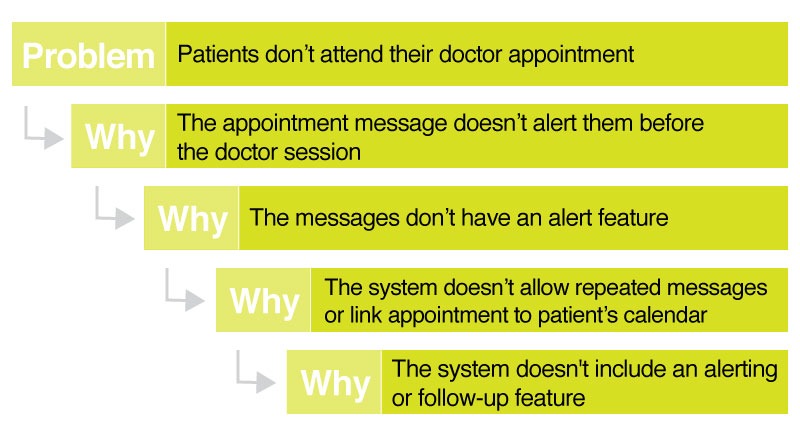
Source: designorate.com
6 steps to a successful 5 Whys Analysis
- State the specific problem that needs to be addressed.
- Gather your team in one room.
- Use a whiteboard.
- Write the specific problem on the whiteboard.
- Ask the first why and invite team members to provide relevant and specific answers.
- Repeat the whys until the root cause of the problem is identified.
- Develop an action plan to remove the problem from the system.
- Break the action plan into tasks which you assign to each team member.
5 Benefits of the 5 Whys strategy of problem-solving
![]() Identify the cause, not just the symptoms.
Identify the cause, not just the symptoms.
 Perform an evidence-based analysis.
Perform an evidence-based analysis.
 Eliminate issues in your system for good.
Eliminate issues in your system for good.
 Seek improvements and welcome change.
Seek improvements and welcome change.
 Build a culture that embraces progress.
Build a culture that embraces progress.
11 rules to perform the 5 whys technique correctly
- Define the problem as accurately and completely as possible.
- Require from your team members complete honesty in answering the questions.
- Be determined to get to the bottom of the problem and resolve it.
- Don’t stop at symptoms, go beyond them.
- Ask the right questions.
- Support your team into being honest.
- Be open to hearing answers that you might not like.
- Five is just the rule of thumb, continue to ask questions until you get to the root cause.
- Ensure that all answers are based on facts and knowledge.
- Assess the process, not people.
- How do you know when you have found the root cause? When eliminating it, you will have prevented the error from occurring again.
Are you going to use the 5 Whys technique?
Join the Conversation
We’d love to hear what you have to say.
Get in touch with us on our LinkedIn Group, Facebook Group or Twitter.
David Meltzer (co-founder & CEO of Sports 1 Marketing): The most successful ventures are those who evolve over time
David Meltzer is the co-founder and CEO of Sports 1 Marketing, top executive business coach and keynote speaker.
His company Sports 1 Marketing is a global sports and entertainment marketing agency that leverages over $20 billion in relationship capital and over 38 years of business experience.
David is a brand, media and business advisor at Youcanevent.com, an early-stage startup with more than half-million dollars in sales generated for hundreds of vendors in the last 12 months.

David Meltzer
He is also chairman of Unstoppable Foundation, a non-profit humanitarian organization bringing sustainable education to children and communities in developing countries.
In 2017, David joined Entrepreneur Elevator Pitch TV series as an executive producer and judge. The show has been running for five seasons with great success.
He has also been recognized as “Sports Humanitarian of the Year” by Variety.
This year, he published his latest book ‘Game-time decision making – High-scoring business strategies from the biggest names in sports’, which teaches readers how to make business decisions with the same confidence and clarity as the world’s best sports coaches.
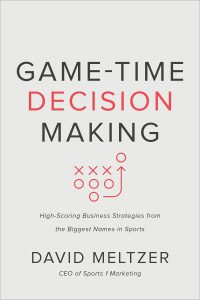
As a successful businessman, David takes to social media to share his insights and provide value to help other entrepreneurs starting out. Follow him on his channels but also tune in to his podcast The Playbook where he talks to people in top management roles at various companies.
I reached out to David Meltzer with a few questions on topics highly relevant in today’s business environment.
Find his answers below.
1. Nokia failed because of its fear-fostering culture. Had it not been for Satya Nadella’s change in leadership style, Microsoft might have had the same fate. Building the right company culture is foundational to that company’s success. What factors should entrepreneurs take into consideration when building their company’s culture?
First, entrepreneurs should consider the relationship between the company’s mission and its core values. What exactly is your company’s mission and how are your core values used to accomplish that mission?
When I first started Sports 1 Marketing, my initial mission statements were convoluted and confusing. It was only after I consulted one of my fellow co-founders that I realized the need to simplify that mission, eventually settling on “Make a lot of money, help a lot of people, and have a lot of fun.”
From there, you need to develop a strategy to instil those values in employees and interns, consistently and persistently.
One of my favourite ways to reinforce company culture is with company-wide meetings or training, for example, our “Monday Morning Meetings” where our team gets together and participates in activities that revolve around our values.
One of the things we highlight for employees is being a “student of your calendar”, so the entire company goes through the calendar to identify possible issues and efficiencies, with employees and interns alike learning more about how we like to run the business.

image: David Meltzer Facebook Page
2. Today the workplace might include employees belonging to four different generations: people in their 60s, 40s, 30s and 20s. What is the entrepreneur expected to do to make sure everyone is happy?
I think the first thing is finding your “vibration”, meaning the frequency that you have and share with others. When you are authentic and vulnerable, this frequency will resonate with those around you, no matter what generation a person is from.
The next step comes when you understand the different ways we communicate and which generation prefers each.
There are three main components to communication, which I call content, access, and medium.
The content is what you are communicating to others, the access is how it is communicated, and the medium is where that content is communicated. When you have a grasp on the type of content that each generation prefers, as well as how and where it is communicated, you are better prepared to inspire your team members and empower them to be happy.

image: David Meltzer Facebook Page
3. What are the building blocks of your success in business?
When interns come into our office, they are often expecting to learn about what it takes to work in sports. The first thing I tell them is that we are going to teach them principles that would serve them in any industry, which are gratitude, empathy, accountability, and effective communication.
Gratitude gives you a positive outlook, making your past unbelievable, your present better, and your future brighter.
Empathy means forgiveness to me, and the person you need to live to forgive first is yourself because you cannot give to others what you do not have for yourself.
Accountability teaches us to ask two questions whenever something happens in our life: What did I do to attract this to myself and What am I supposed to learn about it?
Finally, effective communication requires us to connect in two ways, to those around us as well as to that which inspires us. When you are able to live with those values consistently and persistently, you will not only be successful, but happy.
[bctt tweet=”David Meltzer (CEO @Sports 1 Marketing): The building blocks of business success are gratitude, empathy, accountability and effective communication. ” username=”brand_minds”]
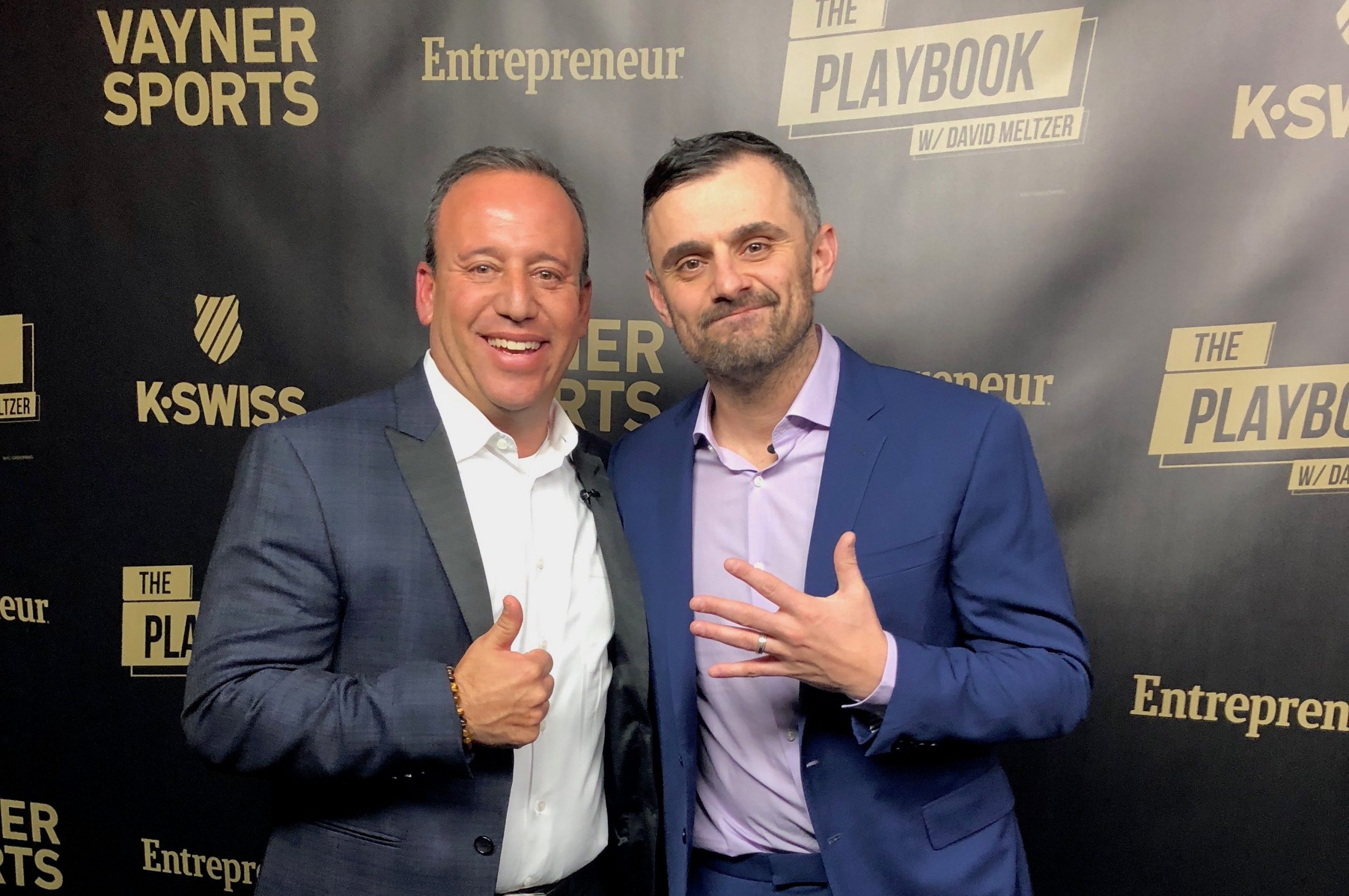
David Meltzer and Gary Vaynerchuk / image: ThriveGlobal
4. Which attitude is better for entrepreneurs: FOMO or JOMO?
I don’t believe fear is a motivator, although it does help some of us to focus, so I would never advise having a “FOMO attitude”.
To me, JOMO is preferable because it centres on happiness and joy. Having a JOMO attitude means that you have a positive perspective, as you are happy to be missing out, instead of a scarce or negative mindset that is associated with fear.
5. You are an experienced and successful entrepreneur. What is your #1 advice for new entrepreneurs?
There is one piece of advice that all entrepreneurs need to take into account: the most important thing for your company is to ensure you stay in business tomorrow. The most successful ventures are those who evolve over time.
Amazon, for example, began as an online bookstore before it evolved into one of the most powerful technology companies.
Google began as a search optimization tool before growing into the diverse powerhouse that the company is today.
This evolution could have never happened unless these companies kept their doors open for long enough to adapt and adjust, and that key is something that all entrepreneurs should consider every single day.
Join the Conversation
We’d love to hear what you have to say.
Get in touch with us on our LinkedIn Group, Facebook Group or Twitter.
Is John Lewis’ Christmas Advert the best advert of 2019?
It’s not Christmas until you’re holding back the tears while watching the John Lewis advert. Enthusiasts can relax now: John Lewis’ 2019 Christmas advert is out. But is it the best? I believe this year, the competition is giving John Lewis a run for their money.
In this article, I talk about the adverts released by Aldi UK, Sainsbury’s, Amazon, Walkers Crisps, Argos and, of course, John Lewis & Partners and a surprise I came across while doing research. I also invite you to share your top Christmas Adverts of 2019 in comments.
Is John Lewis’ 2019 Christmas Advert the best?
Let’s see!
Aldi UK Christmas Advert 2019
The discount chain introduced Kevin the carrot as the star of their Christmas Adverts back in 2016. Kevin’s fame has grown steadily ever since with Aldi turning him and his family into a soft toy.
Last year, when the toy went on sale, it was the subject of a buying frenzy which the stores have never anticipated. The stores’ supplies of the beloved character had quickly run out and people were not happy.
In last year’s advert, Kevin rescues his wife and children from a naughty parsnip. In this year’s story, he is the one in need of rescuing.
We see him tied up to a grater and threatened by an angry mob lead by Russel, the sprout. Russell is channelling Tommy Shelby, the main character in the Peaky Blinders TV series. The Hollywoodian source of inspiration doesn’t stop here. Upon being rescued by a tomato, Kevin breaks into singing and dancing as the Greatest Showman …aaaa, carrot.
Walkers Crisps Christmas Advert 2019
Nine years ago, Mariah Carey released her single All I want for Christmas.
Soon enough, the song became her biggest international success and the 11th best selling single of all time with 16 million copies sold.
Apparently, the world has not had enough of Mariah and her Christmas song.
Watch Mariah Carey win an argument over crisps by leveraging her superpower (if you don’t know what her superpower is, I’ll give you a hint: the Bottlecap Challenge).
Amazon Christmas Advert 2019
Amazon’s Christmas adverts of the past few years follow the same recipe: showing the journey of the Amazon delivery boxes and how they enrich everyone’s lives while singing a well-known feel-good song.
In last year’s ad, we see amazement at Amazon’s latest innovations: Alexa turning the Christmas lights on and the yellow robots doing twirls.
This year, it’s about love.
Love at first sight on the train, the joy of seeing your childhood friend and singing to your favourite song even if your voice is off-key, love shared by family members and same-sex lovers.
And now it’s time to share with you the surprise I was talking about earlier.
As I was doing my research, a question popped into my head: has Amazon always had singing Christmas adverts?
While I was ploughing through YouTube for older adverts, this came up:
It certainly answers my question. Amazon’s story-on-music recipe goes waaaay way back. If I’m not mistaken, it is part of Amazon’s brand.
I think what we are seeing above is a compilation of Amazon Christmas TV ads. The video was uploaded on YouTube in 2009, but the ads are definitely from an earlier period, maybe the 1990s.
Did you think Mary Poppin’s supercalifragilisticexpialidocious was difficult to remember?
Try Amazon’s EMAHTSKCBLVDT!
John Lewis & Partners and Waitrose & Partners Christmas Advert 2019
Last year, the retailer’s ad called The Boy and The Piano, inspired by Elton John’s life story earned over 14 million views.
Will this year’s ad raise to meet the audience’s high expectation? We’ll see.
It’s worth noting that seven hours after the video was published, there were over 1 million views and at the time of this article, it’s well over 8 million views.
Their story this year is about the friendship between a girl and a dragon named Excitable Edgar who ruins the festive experience for everyone in the village by being, well, a fire-breathing dragon.
We all have our own quirks and sometimes we may come off to others as strange. But each of us has its own place in the world. All we have to do is find it. Or have a friend to help us out.
It’s a great story but some say it strikes a remarkable resemblance to Franklin’s Flying Bookshop, a children’s book published in September 2017 by Jen Campbell in which a green dragon also alienated from the community he lives in, befriends a little girl with ginger hair.
This isn’t the first time the creative team behind John Lewis’ Christmas Adverts has been accused of drawing inspiration from other sources but failing to give credit. The 2017 Christmas Advert with Moz the blue monster has also received plagiarism accusations from Chris Riddell, author of Mr Underbed, a picture book about a friendly blue monster living under the bed of a little boy.
Responding to each claim, a spokesman for John Lewis said although monsters living under children’s beds and friendly dragons are very common, both stories are original stories developed by the creative agency.
Sainsbury’s Christmas Advert 2019
If Aldi’s advert is set in 1919, Sainsbury’s story is set in 1869, the year when John Sainsbury and his wife Mary Ann opened their first shop in London.
With this ad, the UK’s second oldest food retailer celebrates 150 years of history and claims to tell the real story of Nicholas the Sweep.
The advert tells the age-old story of the good versus the bad where the bad man gets a piece of coal and the orphans at the children’s home are each gifted an orange.
The magic is performed by Nick with a little help from Mrs Sainsbury who saves him from a gruesome death.
I only wish she had taught them how to eat an orange…
Argos Christmas Advert 2019
My favourite Christmas Advert of 2019 is not John Lewis’ Excitable Edgar; it’s Argos’ Book of Dreams. Argos is one of the UK’s leading digital retailers and was acquired in 2016 by Sainsbury’s.
The story created by Argos for their Christmas Advert is not about a singing vegetable or a magical dragon; it’s not a fairytale of good versus evil.
It’s the powerful story of how children discover their talents when parents encourage and support them.
It’s about building the strongest bond between parents and their children by giving them wings to fly and become the best they can be.
This type of story is timeless.
And watching this father and daughter duo play the drums gives me pure joy and happiness.
What is your favourite Christmas Advert?
Share in the comments!
Join the Conversation
We’d love to hear what you have to say.
Get in touch with us on our LinkedIn Group, Facebook Group or Twitter.
Laurențiu-Victor Bălașa (founder of Underline): On developing a mobile app for book-lovers
Laurențiu-Victor Bălașa is a successful serial entrepreneur. He co-founded 8 companies and exited 3 of them when he successfully sold them to investors.
He co-founded T-Me Studios, one of the biggest Android mobile publishers in the world with more than 700 million users.

Laurentiu-Victor Balasa on the stage at DIGITALIUM
Laurențiu is now building Underline, the mobile app for book-lovers.
The first social note-taking app for books, Underline helps people extract notes from physical, digital and audiobooks, and then share those book notes with friends and followers. It’s a great way to remember more from each book you read and share your knowledge with other learners.
This year, the company raised Euro475000 in funding from Early Game Ventures, an early-stage venture capital firm investing in startups that jumpstart new industries in the emerging markets of Europe.
I was curious to know more about Laurențiu’s experience developing Underline so I’ve asked him a few questions.
Find his answers below.
1. Underline, your mobile app has been on the market for a little over a year. The application was released in March and already has more than 1k organic downloads. Tell us the story of Underline.
Last summer, in ’18, I was reading a brilliant book: ‘Measure What Matters’ by John Doerr. I realized there’s so much knowledge there I’d love to see implemented in my own companies, so I started writing down ideas inside the Google Keep app, the place I would usually go to to take notes.
I was taking photos of book pages, adding them to the book note, and then manually adding the text next to them. The note soon became very long and super complicated to follow. The entire process was just very annoying. On top of that, after I was done, a friend messaged me, and I wanted to share my note with him. Imagine that. It was just impossible.
When I see a problem, I usually look for a solution out there. My first thought was that there should be an app to help folks with this specific case of book note-taking.
Most of the problems you encounter in your day-to-day life have some sort of solution offered by some company. So I started looking. But there was no app I could find which focused on this problem.
At first, it seemed like a crazy thing to build, but the more I thought about it, the more it made sense this should exist.
It’s just a very big problem for book readers.
[bctt tweet=”Underline app founder Laurentiu-Victor Balasa @laurentiuvictor: Once you hit critical mass, if you’ve got a good market fit, the product starts to move on its own. ” username=”brand_minds”]

2. Name 3 challenges that your team had to overcome while developing Underline.
![]() Thinking long-term. Underline will be an open platform for book lovers. This sort of thing needs time to scale.
Thinking long-term. Underline will be an open platform for book lovers. This sort of thing needs time to scale.
![]() Convincing the team/investors/partners to think long-term. We all need to be patient.
Convincing the team/investors/partners to think long-term. We all need to be patient.
![]() Raising money.
Raising money.
3. Build it and they will come. True or false?
Very rarely true.
You need to market yourself, especially if you’re building something new or solving a problem that has never been solved.
You need to explain to people why your solution is better and how it will help them get the job done easier/faster/etc.
Take our case. There are substitute solutions that kinda solve the problem of book note-taking: Evernote, Google Keep, Google Sheets, etc.
But we’re the first to address this problem exclusively, so obviously, our offering is way easier/faster. We need to show people that. We need to market ourselves to reach critical mass. Once you hit critical mass, if you’ve got a good market fit, the product starts to move on its own. But there’s always a certain degree of push that needs to exist.

4. You are a successful serial entrepreneur. What is your advice for mobile app developers starting out?
Don’t do it. Don’t start a mobile company. It’s a pretty red ocean. Do something else.
Look to solve new problems. New markets generate new problems. Look towards new markets.
Mobile has been around for a looong time now. There’s a lot of new markets/niches being created every year. I’m doing a mobile platform because I’ve been lucky enough to start when the market was new.
Share this article with your friends or discover other Success Stories.
Join the Conversation
We’d love to hear what you have to say.
Get in touch with us on our LinkedIn Group, Facebook Group or Twitter.
These 13 brands use Alexa Skills to engage creatively with their consumers
Is your brand positioned toward consumers? You should consider having an Alexa skill to engage creatively with your consumers.
Why?
Because voice has changed consumer behaviour and brands need to start leveraging its power.
According to eMarketer, voice-control technology has officially moved out of the early-adopter phase and into the mainstream.
The market of voice-assistants (Alexa, Google Duplex, ….) is expanding quickly and the reason is very simple: talking to voice-assistants feels natural to people and it’s more convenient.
Voice-assistants users can multitask and get more done with less friction. Shoppers and parents are power users.
Habitual shoppers love the convenience of the shopping experience and getting things done while taking care of a child is every parent’s dream.
Discover more insights on voice including the 2019 Microsoft Voice Report in How voice is changing customer behaviour and the way you do marketing.
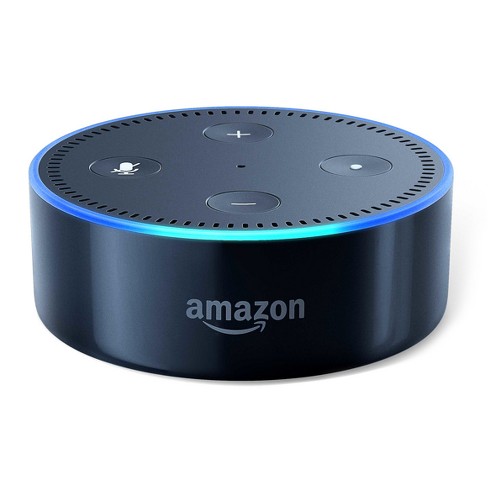
Let’s see how 13 brands take advantage of Alexa Skills to engage with their consumers:
1. Starbucks Reorder

Use Starbucks’ Alexa Skill to reorder your usual cup of coffee from one of the last 10 stores you’ve ordered from.
You can also check your primary Starbucks Card balance and switch between your last 5 previous orders.
2. Domino’s

With Domino’s skill, you can build a new order from scratch, place your most recent order or check your order’s status.
3. Uber

Get a reliable ride in minutes with the Uber skill.
4. Citi Entertainment

Citi Entertainment is developed by Citibank, the financial services company. Use this skill to search for thousands of live music events all over the country.
5. TED Talks
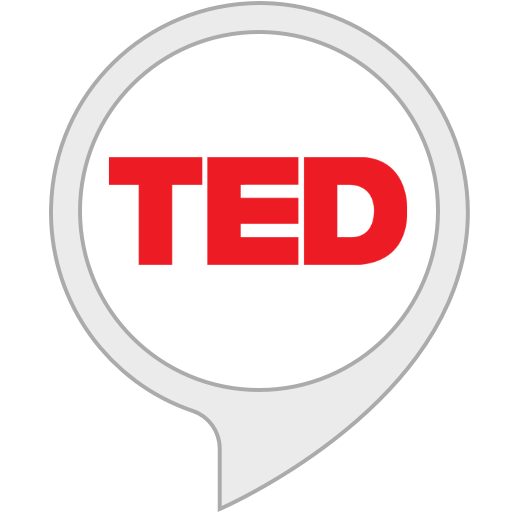
TED Talks are influential videos from expert speakers on education, business, science, technology.
With its Alexa Skill, the nonprofit organization allows users to play the latest TED talk, play random TED talks, or search for talks by topic or by speaker name. They can also play talks that are funny, inspiring, persuasive, courageous, or jaw-dropping.
6. OurGroceries

OurGroceries is a mobile app which provides users with a way to keep grocery lists instantly synchronized on all the smartphones in their household.
This skill lets users add items to the shopping lists on their app.
7. Walmart Stories

In this skill, Walmart invites consumers to discover how the organization is using innovative technologies to redefine the associate and customer experience.
8. Levi’s Assistant
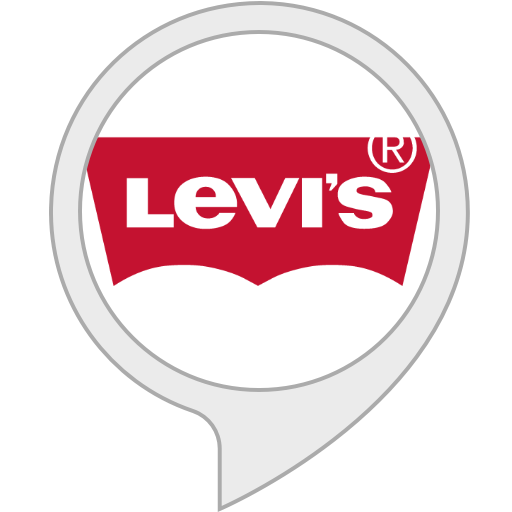
With this Alexa Skill, users get answers to common questions about the jeans manufacturer’s services.
Levi’s shoppers can get help on return policy, how to use gift cards, available payment methods, and more. They can also get help on finding a pair of jeans or the nearest store, track their order and get information on the latest promotions.
9. Bed Bath & Beyond tip of the day

Bed Bath & Beyond Inc. is an American chain of domestic merchandise retail stores.
The company’s Alexa Skill provides users with a daily dose of little life-changers like genius hacks, fun facts, smart tips and expert tricks.
The skill also helps users pick the best products for their whole house, top to bottom.
10. Employment Tips by MooreSuccess Inc.
MooreSuccess is an executive recruiting firm with over 10 years of experience. In its Alexa Skill, the company offers exclusive tips and advice for job seekers from an expert human resources executive.
11. Ten Things in Tech by Business Insider

Business Insider, the financial and business news website operating internationally, developed an Alexa Skill which provides users with the biggest daily tech news.
12. Johnnie Walker

Johnnie Walker, the famous brand of Scotch whiskey goes all-in with its Alexa Skill.
The skill invites users to explore nearly two centuries of whisky knowledge with 4 different options: Choose a Label, Buy a Bottle, Whisky 101, and Try a Guided Tasting.
In “Choose a Label”, consumers can find the perfect blend for themselves or a gift through a series of questions about flavour preference and price.
If consumers are looking to simply buy a bottle of Johnnie Walker, they can choose “Buy a Bottle” and Alexa will help them find the nearest store or delivery option.
When they select “Whisky 101”, Alexa will share a random fact about Johnnie Walker or whisky in general.
In order to “Try a Guided Tasting”, consumers will need one of the core Johnnie Walker Labels on hand: Red Label, Black Label, etc. Then, Alexa will conduct a personalized tasting based on the blend they choose. As they sniff and sip their way through the tasting, she’ll give helpful tips and ways to serve.
13. Hellmann’s Best Recipes by Unilever

Hellmann’s Best Recipes by Unilever is the perfect answer when you want to cook your family a hot meal and need some culinary inspiration. Hellmann’s Alexa Skill has got you covered with a large database of delicious recipes. It’s too late to go shopping and you need to cook with whatever ingredients you have in your fridge? Hellmann’s Best Recipes can help you by providing recipe ideas for ingredients you already have on hand.
Are you planning to launch your own Alexa Skill?
Good!
To make sure you treat your consumers to a great voice-activated experience, here’s how your skill needs to be:
![]() Frictionless. Make sure your users’ experience is seamless.
Frictionless. Make sure your users’ experience is seamless.
![]() Helpful and informative. Include answers that your customers might look for: discounts, catalogue prices, return policy, work hours, the closest store, recommendations related to your product etc.
Helpful and informative. Include answers that your customers might look for: discounts, catalogue prices, return policy, work hours, the closest store, recommendations related to your product etc.
![]() No commercials. Refrain from including commercials in your skill, it’s annoying and it turns people off.
No commercials. Refrain from including commercials in your skill, it’s annoying and it turns people off.
![]() The latest. Provide your consumers with the latest news, the latest company info or products discounts. If you are providing news like the Business Insider, ensure that you upload the latest relevant news to your users.
The latest. Provide your consumers with the latest news, the latest company info or products discounts. If you are providing news like the Business Insider, ensure that you upload the latest relevant news to your users.
![]() Entertaining. If it’s aligned with your brand values and consistent with your brand voice, be entertaining.
Entertaining. If it’s aligned with your brand values and consistent with your brand voice, be entertaining.
![]() Helpful. Help users complete a task or guide them through the stages of a process (cooking a meal etc). Also, cater to your consumers’ needs even if this means not recommending your own product. Hellmann’s skill has a large database of recipes with and without mayo.
Helpful. Help users complete a task or guide them through the stages of a process (cooking a meal etc). Also, cater to your consumers’ needs even if this means not recommending your own product. Hellmann’s skill has a large database of recipes with and without mayo.
![]() Keep the conversation going. Find creative ways to keep talking to your consumers on other platforms (email, social media) and turn them into brand ambassadors.
Keep the conversation going. Find creative ways to keep talking to your consumers on other platforms (email, social media) and turn them into brand ambassadors.
Have you found this article useful?
Share it with your colleagues!
MIRROR brings the future of workout to its users
MIRROR takes advantage of the latest tech and brings its users the future of workout.
On this page:
- What is MIRROR?
- The story behind MIRROR
- Company information
- Features and benefits

MIRROR is a connected fitness system that streams live and on-demand classes to users in-home via a sleek responsive display.
When off, it’s a full-length mirror.
When on, it’s an interactive display complete with embedded camera and speakers.
MIRROR helps you work out on your schedule and in the convenience of your own house.
MIRROR offers the world’s first nearly invisible, interactive home gym featuring live and on-demand fitness classes in a variety of workout genres. For the first time, MIRROR brings the essential components of a great studio workout – variety, personalization, and community – to the most convenient place: the home.
The Story of MIRROR
MIRROR was created in 2016 by Brynn Jinnett Putnam, a former professional ballerina. While running three fitness studios, Brynn found it hard to get to her own workouts. She was also pregnant so she started looking for a way to exercise at home. Bored with running on the treadmill and disappointed with various fitness apps, Brynn began thinking of a more immersive and engaging way to do her workouts. That’s when she came up with MIRROR, the interactive home gym that hangs on the wall.
Company information
The company has raised a total of $74.8M in funding over four months.
It has 11 investors among which Lululemon, the athletic apparel retailer, Spark Capital, the venture capital responsible for funding numerous successful startups including Twitter, Tumblr, Slack and others and supermodel and angel investor Karlie Kloss.
MIRROR has $4M in estimated revenue annually and competes with Peloton, ClassPass, and Wexer.
MIRROR, the interactive home gym that hangs on your wall.
Brynn Jinnett Putnam, founder of MIRROR
Is MIRROR for you?
If you work long hours or have a long commute, and are too tired to go to the gym, MIRROR is a great solution for you.
You can stream 70+ new live classes per week or choose the on-demand classes.
There is little chance to get bored as you have an extensive library of on-demand workout classes ranging from cardio & strength to pre/postnatal, yoga and sculpt. Classes are available 24 hours to your whole household so that every member of your family can get into shape and improve their health.
Not everybody can take an hour-training class so some classes are only 15 minutes long. Throw your I-don’t-have-time-to-exercise excuse out the window: every one of us can spare 15 minutes a day to work out.
MIRROR provides its users with a different experience than watching a fitness video projected on a mirror thanks to instructors giving live feedback and encouragements.
Being able to work out whenever you want, in the convenience of your own home, but with the guidance of a professional while having a one-of-a-kind experience is MIRROR’s POV.
Features of MIRROR
Train with experts – During class, your instructor will provide real-time instruction and even personal shout-outs to keep you motivated.
Work out with friends – Train live with other members of the community who cheer you on to stay on track.
Compete with yourself – Sync a Bluetooth heart rate monitor (complimentary with purchase) or Apple Watch to enable competition mode.
Get real-time personalization – The Mirror optimizes in real-time based on your ability, goals, and preferences for maximum results in minimum time. Sync a Bluetooth heart rate monitor and Mirror will use your biometric data to further enhance your experience.
Enjoy surround sound – Choose from curated playlists featuring popular music or create your own. Use the Mirror’s embedded speakers, or sync your favourite Bluetooth audio device. For the first time, choose your ideal workout class and ideal music for a uniquely personalized experience.

Benefits of MIRROR
- Convenience
- Privacy
- Variety
- Live expert feedback
- Digital tracking
- Fitness levels to suit the needs of its users
- 1 on 1 personal trainer
- Community support
Resources: mirror.co, crunchbase.com, health.com
Join the Conversation
We’d love to hear what you have to say.
Get in touch with us on our LinkedIn Group, Facebook Group or Twitter.
Creating non-intrusive ads for VR/AR and mobile games with Admix
Are you creating VR/AR content? Or developing mobile games? Creating non-intrusive ads is easier with Admix.
Ad blockers have seen an increase in downloads in the past years. For the next period between 2018-2021, eMarketer says ad blocking is slowing down but not going away.
People are installing ad blockers not because they hate all ads (they like good ads and simply ignore the rest), but because they hate intrusive and annoying ads.
According to Google Chrome, 69% of AdBlock users were motivated by annoying ads.
What are annoying ads?
Popups that block the main content of the page, auto-playing video ads with sound, large sticky ads which make you close the page in frustration and many more (you can find all of them on Coalition for Better Ads). Once you have experienced an intrusive ad, you will definitely not be going back to the website which runs it!
The solution is not to eliminate ads entirely but to make them non-intrusive and as organic and relevant as possible.
If you are looking to create such ads, Admix is your plugin of choice.

What is Admix?
Admix is a monetisation platform for games, VR and AR.
At Admix, we hate intrusive advertising as much as you do. We built a unique technology empowering you, the creator, to generate revenue whilst maximising the experience of your users on any platform.
With Admix, you can place ads in VR/AR, on mobile and PC/console.
What ads can you create with Admix?
3D interactive ads
Admix allows you to create interactive 3D ads which are a mini brand experience consumable within your content.
Banner ads
Banner ads are the simplest ad format you can place, resize and customise anywhere in your content, and is supported by thousands of advertisers.
Video ads
Short-form, highly engaging video ads with directional audio, to integrate anywhere in your content and maximise your revenue.
Features and Benefits of creating non-intrusive ads with Admix
Easy setup
The drag and drop plugin allows you to place ads wherever you want in a matter of minutes
Never ever intrusive
The plugin allows you to always prioritise user experience over revenue, and keep innovating on formats to never intrude or interrupt your users.
Always relevant
The team behind Admix works with the most reputable advertising partners to guarantee that your ads are always relevant to the environment and your users.
Platform agnostic
Whether you want to monetize a mobile game on Android or a shopping app on Oculus VR, our technology is totally platform agnostic.
Advanced controls
Create stunning experiences with various formats which range from curved placements to programmable
Instant monetization
Here are the results Rabbit Mountain got following the integration of the Admix solution:
Join the Conversation
We’d love to hear what you have to say.
Get in touch with us on our LinkedIn Group, Facebook Group or Twitter.
Fitbit to be acquired by Google for $2.1 billion
On this page:
- Fitbit 2019 company overview
- Google and Fitbit – a perfect match
- Wearable market size and forecast growth
On November 1, Fitbit officially announced it has entered into a definitive agreement to be acquired by Google for $21.1 billion.

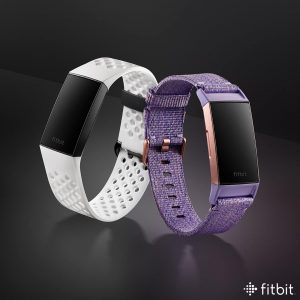
Fitbit – 2019 company overview
Fitbit is one of the top global manufacturers in the wearable technology market.
The company’s mission is to motivate its customers to reach their health and fitness goals by tracking their activity, exercise, sleep, weight and more.
One of the top 3 manufacturers in its industry, Fitbit is leading the wearables category by delivering innovative, affordable and engaging devices and services. Its devices are designed to help users understand and change their behaviour to improve their health by utilizing data to deliver unique personalized guidance and coaching.
- Founded in 2007 by Aatu Nieminen, Eric Friedman and James Park;
- Products: smartwatches, trackers, smart scales, the Fitbit app; they track activity, exercise, food, weight, sleep;
- 28 million active users around the globe;
- Has sold more than 100 million devices;
- Awards and Recognition: Voted 2018 Tracker of the Year and Wearable of the Year by Wearable, Best Swimming Tracker by SELF, Personal Design Excellence & Innovation by Good Design, 2018 Product Design Award by RED DOT, Best Budget Smartwatch by Men’s Health, the CES 2019 Innovation Awards Honoree;
- It was the first in the wearable category, the first to introduce automatic, wireless syncing, and the first to provide an open API;
- In October, Fitbit partnered with pharmaceutical giants Bristol-Myers Squibb and Pfizer to accelerate the detection and diagnosis of atrial fibrillation to reduce the risk of life-threatening events such as stroke;
- Large community on social: 2,7 million followers on Facebook, 667k on Instagram, 62,3k on Twitter, 86.7k followers on Pinterest with 385.8k monthly unique viewers;
- Fitbit has raised a total of $66 million in funding over 4 rounds and acquired 6 organizations: Twine Health (2018), Vector Watch (2017), Pebble and Coin (2016), FitStar (2015) and Switch2Health (2013).
Fitbit and Google – a perfect match
Fitbit views Google as the ideal partner to advance the company’s mission.
With Google’s support, Fitbit will be able to accelerate innovation in the wearables category, scale faster, and make health even more accessible to everyone.
Being acquired by the tech giant is a step forward for Fitbit, but it also bears a few risks. Such as the risk of having its users’ health and wellness data used by Google to run ads. The company’s management is well aware that this risk could jeopardize customer trust and addresses it in the press release:
Consumer trust is paramount to Fitbit. Strong privacy and security guidelines have been part of Fitbit’s DNA since day one, and this will not change. Fitbit will continue to put users in control of their data and will remain transparent about the data it collects and why. The company never sells personal information, and Fitbit health and wellness data will not be used for Google ads.
Fitbit Press Release
In its acquisition announcement published on the company blog, Google delivers the same message to Fitbit users almost word for word:
Similar to our other products, with wearables, we will be transparent about the data we collect and why. We will never sell personal information to anyone. Fitbit health and wellness data will not be used for Google ads. And we will give Fitbit users the choice to review, move, or delete their data.
Rick Osterloh, Senior Vice President, Devices & Services, Google, ‘Helping more people with wearables: Google to acquire Fitbit’
The blog’s author, Google Senior Vice President, Devices & Services Rick Osterloh says acquiring Fitbit supports Google with achieving its goal: creating tools that help people enhance their knowledge, success, health and happiness.
The software and hardware manufacturer will also help Google make progress towards a second goal: introducing Made by Google wearable devices into the market.
By working closely with Fitbit’s team of experts, and bringing together the best AI, software and hardware, we can help spur innovation in wearables and build products to benefit even more people around the world.
Rick Osterloh, Senior Vice President, Devices & Services, Google, ‘Helping more people with wearables: Google to acquire Fitbit’
Wearable market size and forecast growth
Health wearables are all about data. Processing large amounts of data used to be impossible or difficult to achieve.
Latest technology developments like AI and machine learning changed that. Just last month, Google announced its latest achievement – the quantum computer. Although it will be many years before quantum computing translates into practical applications, it is the sign of a bright future for every industry, including wearable.
Wearable devices are a powerful growth factor in the health & wellness industry which is now worth $4.2 trillion.
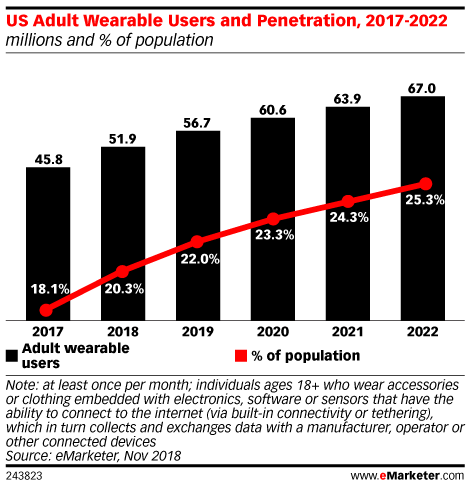
eMarketer estimates that 67 million people in the US will own a wearable device by 2022. The smart wearable market is expected to grow by 19% over the next five years with competitors like Garmin, Apple and Samsung fighting to take a bigger slice of the pie.
Join the Conversation
We’d love to hear what you have to say.
Get in touch with us on our LinkedIn Group, Facebook Group or Twitter.
Amazon’s CTO & VP Werner Vogels will be speaking at BRAND MINDS 2020
We are excited to announce the latest speaker to join our BRAND MINDS 2020 lineup: Amazon’s CTO & VP Werner Vogels.
Last year, Amazon reached a market capitalization of $1 trillion (just behind Apple) and its net worth is estimated at $160 billion.
One of the factors which contributed to Amazon’s success is having Werner Vogels at the helm of technology, steering the company into the future.
Vogels’ vision and leadership have lead to the creation of one of Amazon’s highly successful services, the AWS.
With his extensive experience leading one of the most innovative tech companies in the world as its CTO&VP, Werner Vogels will be speaking at BRAND MINDS 2020 about Innovation at scale at Amazon.com
Let’s find out more about Werner Vogels.
Godfather of the Cloud
Vogels is was one of the architects behind Amazon’s approach to cloud computing, AWS (Amazon Web Services).
AWS is one of the world’s most comprehensive and broadly adopted cloud platform, offering over 165 fully-featured services from data centres globally.
Millions of customers —including the fastest-growing startups (Airbnb, Lyft etc), largest enterprises (Oracle, Siemens, Engie, Hilton, British Petroleum, Shell etc), and leading government agencies (the Smithsonian, Minnesota IT Services, City of Iowa City etc) —trust AWS to power their infrastructure, become more agile, and lower costs.

Image source: Werner Voges / sprout.nl
Named in the Top 10 Cloud Computing Leader list in 2010, 2011, and 2012
For three years in a row, Werner Vogels was included by TechTarget in its Top Cloud Computing Leader lists.
He earned Information Week’s 2008 CIO/CTO of the Year award and ReadWriteWeb’s “Cloud’s Most Influential Executive.
He also ranked #1 in Wired’s 2012 Top 10 Cloud Influencers, Thought Leaders.
I am an engineer, architect, scientist, programmer, troublemaker, executive, revisionist, investor, mentor, advisor, analyst, academic, sales guy, entrepreneur, data analyst, system administrator, product owner, evangelist, debater, father, musician and biker. And I probably forgot a few.
Werner Vogels
Doctor in Computer Science – One of the World’s Top Experts on Ultra-Scalable Systems
Dr Vogels studied computer science at The Hague University of Applied Sciences and received a PhD in computer science from the Vrije Universiteit Amsterdam, Netherlands. He is celebrated as one of the world’s top experts on ultra-scalable systems.
Dr Vogels joined Amazon in 2004 from Cornell University where he was a research scientist at the Computer Science Department.
From 1994 until 2004, he mainly conducted research in scalable reliable enterprise systems.
He is the author of many conference and journal articles, mainly on distributed systems technologies for enterprise computing systems.
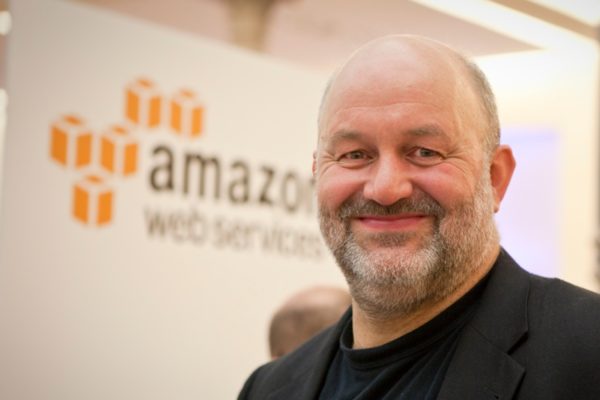
Was appointed VP&CTO at Amazon six months after he was hired
Prior to coming to Amazon, Werner was invited to give a talk on distributed systems for the company’s employees. His first thought was What do they need distributed systems? They sell books online!
After seeing what the Amazonians are working with, he realized Amazon was not an online bookseller, but a tech company by every definition and one that was actually 5-10 ahead of its time.
When Jeff Bezos offered Werner a job with Amazon, he was more than thrilled to accept it. Six months later he was appointed Vice President & Chief Technology Officer at Amazon.
One of the reasons for hiring Werner was to insert academic rigour into the way the company wanted to approach scaling.
At that time, in the early 2000s, Amazon had become really good at scaling but was struggling to overcome their latest challenge which was to do orders of magnitude.
Amazon asked Werner to find a solution which would help the company achieve growth by orders of magnitude.
Werner’s solution had to align everything, from tech to processes, to building a culture around how to measure performance and how to interpret those measurements.
Also, his main goal as CTO is to find what other technologies the company has developed that could be turned into a business. His job is to look at a wide array of factors and tie everything to business decisions.
I like building things that need to get big. Whether that is technology or a business, I am interested in how to scale them.
I believe in democratising business creation, simplifying operation and driving innovation by providing a low cost, scalable and reliable infrastructure that can be acquired on-demand with a pay-as-you-go pricing model, and that is available to everyone.
Werner Vogels
What is Werner Vogels’ role as Chief Technology Officer?
As Chief Technology Officer at Amazon, Werner Vogels is responsible for driving the company’s customer-centric technology vision.
His role is to decide what is the technology that the company needs for the future in order to be able to have a solid footing as a business.
He interacts at a deep technical level with Amazon’s customers to understand how they are using the company’s products. He is looking for bigger patterns among the customers, setting out to pinpoint the biggest pain points they might still have. He then takes the customer feedback and decides what needs to improve or what features need to change to make sure the company serves its customers better.
We’re in the business of pain management.
Werner Vogels
What makes Amazon.com so successful? What made it an eCommerce powerhouse?
There are many reasons, but one of the most important is that they are building technologies at the request of customers. They are very good listeners which a feature like Show and Tell, Alexa’s support for the blind can attest to.
The engineering teams launch Amazon products with minimal features set, a sort of MVP and then work with customers to develop other features they need.
Learn more: How AI transformed Amazon into an eCommerce powerhouse
Sharing his insights on his blog, All Things Distributed
Werner Vogels is also a blogger. His blog, All Things Distributed is the place where he shares his insights on building scalable and robust distributed systems, machine learning, artificial intelligence technologies.
He also writes about how large enterprise customers use AWS, what is the workplace of the future or how the relationship between human and machine is going to change our world even more than we anticipated and many more hot topics.
Now Go Build with Werner Vogels
Now Go Build with Werner Vogels is a documentary series show running on Amazon Prime, where viewers follow Werner as he meets with startups around the globe that are changing the way we live through innovation.
Join BRAND MINDS 2020 – The Growth Weekend on September 25th and watch Werner Vogels speak about Innovation at scale at Amazon.com!
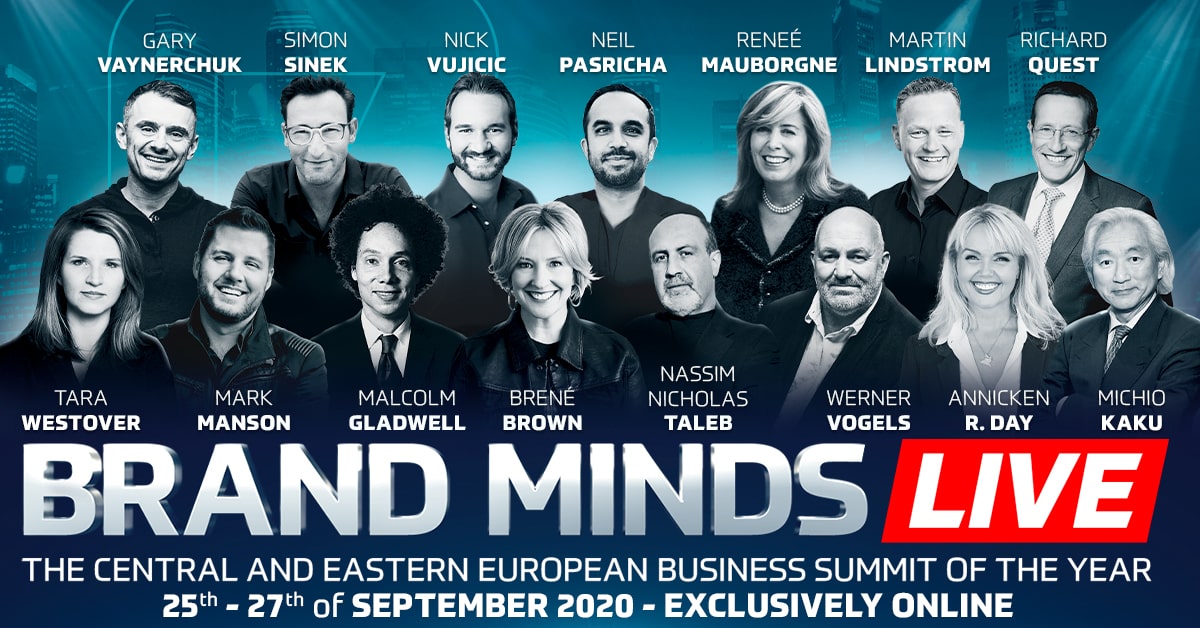
How voice is changing customer behaviour and the way you do marketing
Table of contents:
- 2019 voice-assistant statistics
- 8 reasons why people use voice-assistants
- 2019 Microsoft Voice Report key insights
- 3 brands using Alexa skills to grow
- How to optimize your content for voice search
Voice is changing customer behaviour and the way we do marketing.
These changes have brought about the advent of vCommerce (voice commerce). vCommerce is the next stage of eCommerce designed to include voice shopping.
In this article, I share statistics, insights and recommendations curated from Think with Google, eMarketer and Microsoft to help you get an overall view of voice commerce and the factors underpinning its growth.
People like talking; it’s our main way of exchanging information, connecting with each other and doing things. The latest developments in machine learning allowed for the rapid growth of voice-control technology like voice assistants (Google Duplex, Alexa etc) and voice search.
Why are voice-assistants so popular?
Because they make our life easier.
When you’re preparing a new recipe for your family, it’s more convenient to get step-by-step guidance by voice than to fumble on your smartphone with your hands dirty of flour, oil or minced meat.
According to eMarketer, voice-control technology has officially moved out of the early-adopter phase and into the mainstream.
The market is expanding quickly. Is your marketing ready for it?
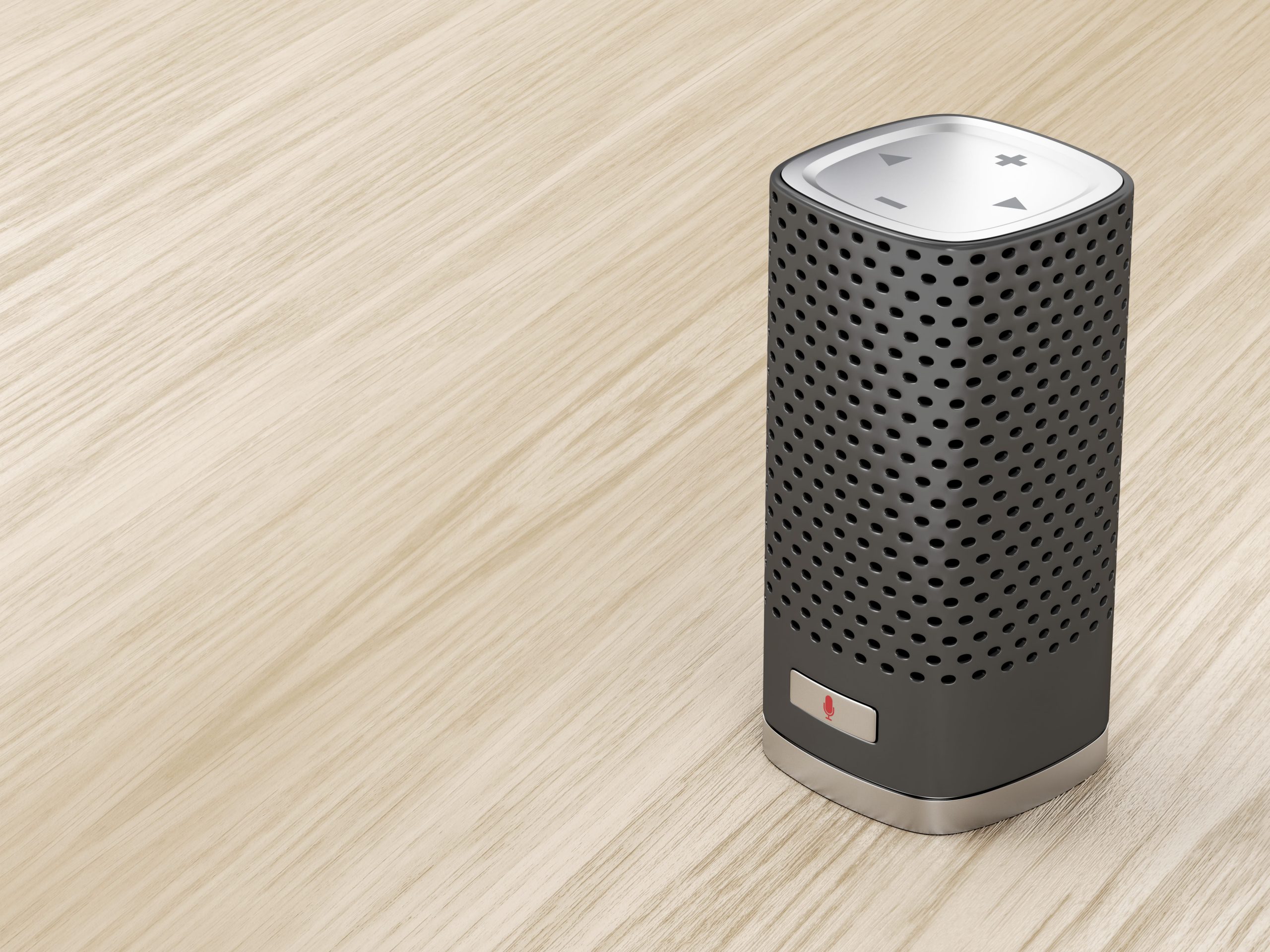
2019 Voice-Assistants Statistics
![]() By 2021, the number of US voice assistant users will reach 122.7 million, representing 42.2% of US internet users and 36.6% of the US population (eMarketer)
By 2021, the number of US voice assistant users will reach 122.7 million, representing 42.2% of US internet users and 36.6% of the US population (eMarketer)
![]() There will be 57.6 million female and 54.2 million male voice assistant users in the US by the end of 2019 (eMarketer)
There will be 57.6 million female and 54.2 million male voice assistant users in the US by the end of 2019 (eMarketer)
![]() 62% of those who regularly use a voice-activated speaker say they are likely to buy something through their voice-activated speaker in the next month (ThinkWithGoogle)
62% of those who regularly use a voice-activated speaker say they are likely to buy something through their voice-activated speaker in the next month (ThinkWithGoogle)
![]() 44% of those who regularly use a voice-activated speaker say they order products they need like groceries, household items, etc., at least once a week (ThinkWithGoogle)
44% of those who regularly use a voice-activated speaker say they order products they need like groceries, household items, etc., at least once a week (ThinkWithGoogle)
![]() 53% of people who own a voice-activated speaker said it feels natural talking to it (ThinkWithGoogle)
53% of people who own a voice-activated speaker said it feels natural talking to it (ThinkWithGoogle)
![]() 51% of people 55+ said a top reason for using voice-activated speakers is “it empowers me to instantly get answers and information” (ThinkWithGoogle)
51% of people 55+ said a top reason for using voice-activated speakers is “it empowers me to instantly get answers and information” (ThinkWithGoogle)
![]() 72% of parents who own voice-activated speakers said they are likely to use them to buy something in the next month, compared to 51% of non-parents (ThinkWithGoogle)
72% of parents who own voice-activated speakers said they are likely to use them to buy something in the next month, compared to 51% of non-parents (ThinkWithGoogle)
![]() Almost 70% of requests to the Google Assistant are expressed in natural language, not the typical keywords people type in a web search (ThinkWithGoogle)
Almost 70% of requests to the Google Assistant are expressed in natural language, not the typical keywords people type in a web search (ThinkWithGoogle)
![]() 80% of users reported being somewhat or very satisfied (2019 Microsoft Voice Report)
80% of users reported being somewhat or very satisfied (2019 Microsoft Voice Report)
![]() 66% of owners use them weekly (2019 Microsoft Voice Report)
66% of owners use them weekly (2019 Microsoft Voice Report)
Why are people using voice-assistants? 8 reasons according to Think with Google
- It allows them to more easily multitask.
- It enables them to do things faster than other devices.
- It empowers them to instantly get answers and information.
- It makes their daily routine easier.
- It’s in the centre of the home.
- People are getting more done with less friction.
- It offers a new, more human relationship with technology. People are engaging with their voice-activated speakers as if they were human.
- Parents are power users and shoppers. Being a parent is a full-time job, they literally have their hands full most of the time every day. So it’s easier to get other things done by talking to a voice-assistant. Parents want to find business information, call up customer service, and discover new brands using their devices. Voice-assistants are also a way to keep the kids entertained and help parents catch a break and relax for a few minutes.
2019 Microsoft Voice Report Key Insights
What started out as blue links on a search engine results page (SERP) is currently transforming into something even larger in scale and deeper in breadth. The blue links are disappearing. Keywords are disappearing. Keyboards are disappearing. What will be left?
Microsoft Voice Report 2019
Microsoft’s 2019 Voice Report analyzes the latest voice disruption.
Here are the report’s most interesting findings related to voice and voice search:
![]() Search moves from a place of answers to a state of action. Consumers are using voice search to shop, get directions, make reservations, book travel, etc.
Search moves from a place of answers to a state of action. Consumers are using voice search to shop, get directions, make reservations, book travel, etc.
![]() Voice itself is not the next big disruptor. Conversational AI has a bigger impact on consumer behaviour because it flips the user dynamic: instead of humans learning computer code, computers are learning our language.
Voice itself is not the next big disruptor. Conversational AI has a bigger impact on consumer behaviour because it flips the user dynamic: instead of humans learning computer code, computers are learning our language.
![]() Search engines are morphing into personal digital assistants.
Search engines are morphing into personal digital assistants.
![]() Even though smartphones currently outnumber smart speakers, this could also change fast as smart speakers head mainstream. Consumers find themselves putting down their phones to engage more with their smart speaker.
Even though smartphones currently outnumber smart speakers, this could also change fast as smart speakers head mainstream. Consumers find themselves putting down their phones to engage more with their smart speaker.
![]() Voice-controlled technology has crossed the chasm from early adopters into the early majority of users.
Voice-controlled technology has crossed the chasm from early adopters into the early majority of users.
![]() Voice is a replacement for keyboards and touchscreens.
Voice is a replacement for keyboards and touchscreens.
![]() vCommerce (voice commerce) is the next stage of eCommerce designed to include voice shopping. It minimizes friction, elevates ease and convenience to a new level in which there will be no going back. Why waste time by standing in line to order your custom coffee when you could tell Alexa to have it ready for in-store pickup?
vCommerce (voice commerce) is the next stage of eCommerce designed to include voice shopping. It minimizes friction, elevates ease and convenience to a new level in which there will be no going back. Why waste time by standing in line to order your custom coffee when you could tell Alexa to have it ready for in-store pickup?
![]() 35% of respondents have made a purchase using voice and they enjoyed the experience.
35% of respondents have made a purchase using voice and they enjoyed the experience.
![]() 70% believe that the digital assistants will not only help them shop but understand their preferences and make routine purchases on their behalf within 5 years.
70% believe that the digital assistants will not only help them shop but understand their preferences and make routine purchases on their behalf within 5 years.
![]() Brands will need to pay attention to how each of the digital assistants and voice technologies pull their recommendations to make sure that they don’t get left behind.
Brands will need to pay attention to how each of the digital assistants and voice technologies pull their recommendations to make sure that they don’t get left behind.
![]() vCommerce redefines shopping, repurposes the functions of a physical store, minimizes time and stress for consumers and maximizes the importance of personalization and brand loyalty.
vCommerce redefines shopping, repurposes the functions of a physical store, minimizes time and stress for consumers and maximizes the importance of personalization and brand loyalty.
![]() Retailers should create digital assistants that don’t just sell products but act as trusted resources.
Retailers should create digital assistants that don’t just sell products but act as trusted resources.
![]() Retailers should not approach voice skills and actions as shiny new things, but try to solve actual problems to create deeper relationships with their customers.
Retailers should not approach voice skills and actions as shiny new things, but try to solve actual problems to create deeper relationships with their customers.
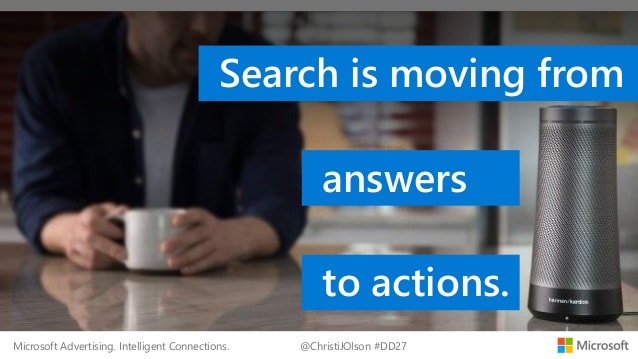
3 brands using Alexa skills to grow
Campbell’s Kitchen skill provides users with recipes that incorporate ingredients they already have in their kitchen.
Zyrtec’s Your Daily Allergy Cast skill blends information from the local weather forecast, the pollen count and a database of the most common outdoor allergens to predict the impact on the user’s allergies.
Tide’s Stain Remover skill can help users remove just about anything from their clothing.
Curious how other brands use Alexa skills? Read These 13 brands use Alexa Skills to engage creatively with their consumers.
How to optimize your content for voice search
Write content that is both informational (“What is the best brand of paper towel?”) and action-based (“Order more paper towels.”)(Think with Google)
Write content with natural language. Voice searches are longer and more conversational than text-based search. (Think with Google)
Include filler words in question keywords – I, the, me, for. Mobile searches for “do I need” have grown over 65%. For example, “how much do I need to retire,” “what size generator do I need,” and “how much paint do I need.” This enables people to get answers quickly and efficiently and it also gives them the confidence that they’re getting exactly what they need. (Backlinko)
Marketers should lock down keywords and phrases typically associated with their businesses and then consider natural language search phrases that customers might be using to find them. (Think with Google)
Google tends to answer voice search queries with short, 29-word results. Have your content answer someone’s query in 30 words or less. (Backlinko)
Create voice search FAQ pages. Question keywords grow year over year and Google pulls answers from FAQ pages where the answer is, you guessed it, 30 words or less. (Backlinko)
Optimize for featured snippets: 40.7% of voice search answers come from the Featured Snippet. (Backlinko) Learn how to optimize your content for Google’s Featured Snippets.
Write longer content with long tail keywords. Longer content (around 2000 words) means more opportunities for Google to find a match with a voice search query. (Backlinko)
Are you going to optimize your content for voice search?
Join the Conversation
We’d love to hear what you have to say.
Get in touch with us on our LinkedIn Group, Facebook Group or Twitter.



